In this post you will find desert biome examples and detailed explanations about their physical conditions and life.
Biomes are the world’s terrestrial biotic communities, each containing a distinct array of plant and animal life. Desert biomes are found in rain shadow zones, where dry air from the equator falls from the high sky and warms as it is compressed towards the land.
Desert biome examples are discussed below:
- Sahara desert
- Gobi desert
- Arabian desert
- Thar desert
- Antarctic desert
- Atacama desert
- Kalahari desert
- Ladakh desert
- Mojave desert
Characteristic of Desert Biome
Physical conditions:
- The weather is a mix of hot, cold, and dry. Because there is little water vapour in the air, it is a poor insulator.
- Because the ground radiates heat swiftly, the temperature rises throughout the day and drops dramatically at night.
- Rainwater swiftly penetrates into deeper layers of the ground or evaporates when annual rainfall is less than 20- 25cm. The soil type is either sandy or rocky.
Life:
- The desert biome has less life than most other terrestrial biomes. Only species with adaptations to resist temperature extremes and arid conditions may survive in this environment.
- The vegetation is xerophytic and sparse. Individual plants are often spread widely, with enormous distances between them.
- Succulents, such as cacti and euphorbias, which store water in their tissues, hardy grasses, and prickly shrubs and trees with long spreading roots, such as Acacia, Prosopis, Tamarix, and date palm, are among the distinctive plants.
- Annual flowers and grasses bloom during the wet season and have a short life cycle. Ephemerals are what they’re called.
- The animals are primarily small and nocturnal, burrowing into the cooler earth to avoid the heat of the day, when they would lose water rapidly.
- Arthropods, reptiles, birds, and mammals are among the animals. Scorpions, spiders, centipedes, and insects are all examples of arthropods.
- Horned lizards, Gila monsters, collard lizards, coral snakes, and rattle snakes are among the reptiles.
- The roadrunner, cactus woodpecker, burrowing owl, raven, Gambel’s quail dove, turkey, vulture, swifts, and swallows are among the local birds.
- Camels, white-tailed deer, mountain sheep, jack rabbit, various rodents, grey fox, jackal, cat, skunk, and badger are among the mammals. A few toad species are also prevalent.
Thar Desert
The Great Indian Desert, often known as the Thar Desert, is located in India. Rajasthan’s territory to the west of the Aravalli Hills is stony and sandy. It runs from Gujarat’s Rann of Kachchh across Rajasthan and into Haryana’s borders.
A heavy layer of loose sand blankets the Thar desert. Sand dunes are little sand hills that can be seen in some areas. Strong gusts blowing here may carry a lot of sand with them. They have the ability to alter the sand dunes. In the Thar Desert, there are extremely few streams.
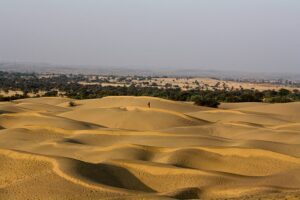
They are usually dry. The most important river is the Luni. Oasis can be found in some areas. The ground surrounding an oasis is rich in nutrients. Crops are grown in this area. Throughout the year, the thar desert is hot and dry. Rainfall is scarce or non-existent. Because of the hot and dry climate, the vegetation is largely scattered plants and spiny shrubs.
The eastern half of the desert is home to the khejri, kikar, and babul trees. Camels, blackbucks, chinkaras, and big Indian bustards can all be found in this area.
Sahara Desert
It is the largest desert on the planet. It covers around 8.54 million square kilometres. Eleven countries are bordered by the Sahara desert. Algeria, Chad, Egypt, Libya, Mali, Mauritania, Niger, Sudan, Tunisia, and Western Sahara are the countries involved.
Despite its difficult climate, it is home to a diverse population. There are nomadic tribes who raise goats, sheep, camels, and horses as livestock. They get milk and hides from these animals, which they use to produce leather belts, slippers, and blankets. People cultivate date palms as well as rice, wheat, and barley.
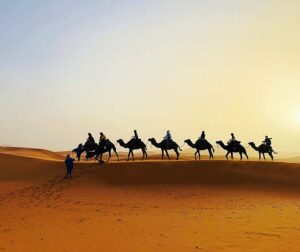
Cactus, date palms, and acacia trees make up the vegetation. Camel, hyenas, jackals, foxes, scorpions, and a wide variety of snakes and reptiles are among the most common animals found there.
Atacama Desert
It is situated west of the Andes Mountains. It is considered as the “absolute desert”. There are regions where no rain has ever been reported in recorded weather history. The Andes mountain range, as well as wind patterns from both the Atlantic and Pacific Oceans, obscure this location, preventing water from being deposited there.
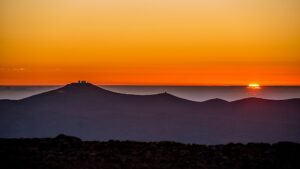
Even though it is one of the driest deserts, it serves a role even without life. Saltpetre is an combustible similar to powder that has been used for decades in the mining of silver, tin, and copper in the Andes region. Because of the dry circumstances, saltpetre is actually extracted from this desert.
Gobi Desert
It is Asia’s second largest desert, as well as the world’s largest non-polar cold desert.
China and Mongolia are also home to this desert. Summers are scorching hot, while winters are bitterly cold. This desert is traversed by the Yellow River.
Kalahari Desert
This desert is located on the African continent and encompasses Botswana, Namibia, and South Africa. Kalahari is a word that means “great thirst.” The Okavango River circles the desert. It is known for diamond mining and hunting by the San people.
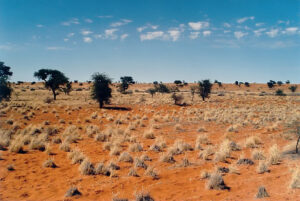
Antarctic desert
Antarctica is the world’s largest desert, covering twice the area of the Sahara desert.
The atmosphere is relatively dry, and clouds are uncommon. It has an average annual precipitation of 150 mm, which is less than 250 mm, which qualifies it as a desert.
Ladakh Desert
It’s a frigid desert. It is located between the Karakoram and Zanskar ranges. The Indus River runs through Ladakh.
Ladakh is home to a number of glaciers. E.g. Gangri glacier. A very cold temperature has been discovered. It is located in a rain shadow location, with annual rainfall as low as 10cm. The area is subjected to bitter cold winds and scorching heat.
Mojave desert
It is North America’s driest desert. The Mojave Desert covers 47,877 square miles in southern California and southern Nevada, with small sections in Utah and Arizona.
The wide plains of this desert contain some of the harshest and deadliest environments in all of America. Death Valley National Park, as its name suggests, is an arid area in the Mojave Desert where temperatures regularly exceed 120 degrees Fahrenheit. The Mojave Desert is home to about 700 animal species and over 2000 plant types.
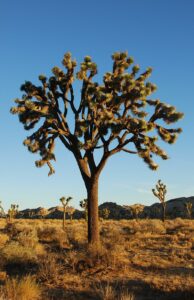
Joshua tree is one of the most fascinating plant species found in the Mojave Desert. The desert tortoise is one of the animals that live in this area that is steadily becoming endangered.
Arabian desert
In Western Asia, the Arabian Desert is a large desert region. It runs from Yemen to the Persian . It encompasses the majority of the Arabian Peninsula. It is the world’s fifth largest desert and the largest in Asia.
Although there are a few indigenous plants in the Arabian desert ecoregion, there is limited biodiversity. Hunting, habitat damage, cattle overgrazing, off-road driving, and human encroachment on their habitat have all contributed to the extinction of many species, including the striped hyena, jackal, and honey badger. Other species, such as the Arabian sand gazelle, have been added to protect them for the desert.
Frequently Asked Questions
Define Desert.
The amount of precipitation (rain, snow, mist, and fog) in an area defines a desert. A desert is a location with relatively little precipitation. Deserts come in a variety of shapes and sizes, including subtropical, coastal, and polar deserts. They all share a desolate, windswept landscape that makes it difficult for plants and animals to establish themselves on land.
Also Read:
- Spoilage bacteria examples
- Types of eukaryotic chromosomes
- Terrestrial biome examples
- Are bacteria biotic or abiotic
- Capsule fruit examples
- Is prokaryotic dna circular or linear
- Spliceosome function
- Hypotonic solution examples
- Ecosyetm examples
- Zygote

Hi, I am Saif Ali. I obtained my Master’s degree in Microbiology and have one year of research experience in water microbiology from National Institute of Hydrology, Roorkee. Antibiotic resistant microorganisms and soil bacteria, particularly PGPR, are my areas of interest and expertise. Currently, I’m focused on developing antibiotic alternatives. I’m always trying to discover new things from my surroundings. My goal is to provide readers with easy-to-understand microbiology articles.
If you have a bug, treat it with caution and avoid using antibiotics to combat SUPERBUGS.
Let’s connect via LinkedIn: